If you're having a hard time figuring out which camera to buy, you may be tempted to make a decision based solely on megapixel count. However, outside of making huge prints or blowing up small portions of an image, megapixels can be meaningless. In fact, a high megapixel count can lead to noisier, less-sharp images unless you're using a camera (camera battery) with a larger image sensor (such as a DSLR or a compact interchangeable-lens camera).
Other features are often more important, and they depend on what you'll be using the camera for. For example, a lethargic camera that takes too much time between shots is a lemon for sports or action photographers, and a big, heavy DSLR that takes amazing photos may spend more time on the shelf than in your carry-on bag. A camera (CANON NB-4L battery) with no manual controls may take fabulous shots in bright sunlight, but lousy ones in more challenging situations.
Starting at the top of the photographic food chain, here are the pros and cons of each type of camera.
Weaknesses: Expensive; lack of portability; not all DSLRs shoot video; can be complex and intimidating
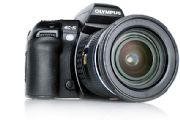 If money's no object and performance is your top priority, a digital SLR yields the best photo quality and imaging controls of any type of digital camera (CANON camera battery). The combination of a large sensor, high-quality lenses that you can swap out to achieve a wide range of effects, great high-ISO performance in low light, and lightning-quick shutter response times make it the go-to camera for hobbyists and pro shooters. (CASIO NP-40 battery)A DSLR is also the only type of camera that lets you frame shots using a through-the-lens optical viewfinder, meaning that what you'll see through the eyepiece is a true-to-life representation of your shot.
If money's no object and performance is your top priority, a digital SLR yields the best photo quality and imaging controls of any type of digital camera (CANON camera battery). The combination of a large sensor, high-quality lenses that you can swap out to achieve a wide range of effects, great high-ISO performance in low light, and lightning-quick shutter response times make it the go-to camera for hobbyists and pro shooters. (CASIO NP-40 battery)A DSLR is also the only type of camera that lets you frame shots using a through-the-lens optical viewfinder, meaning that what you'll see through the eyepiece is a true-to-life representation of your shot.
Though the prospect of using a DSLR can be intimidating for novice users, most modern models are outfitted with point-and-shoot-like features and LCD-based viewfinders to make the migration easier. (CASIO EXILIM EX-S100 battery)Beyond user-friendly auto-exposure and scene modes, you also get room to grow as a photographer due to a DSLR's full range of manual controls.
The only major drawback to a DSLR is its size, which makes it a tough camera to bring anywhere you go. Price is also a major consideration, even after you spend an initial $700 to several-thousand dollars on the camera body alone. Additional lenses are a must when it comes to unleashing the full power of your DSLR, and they usually cost several hundred dollars a pop (at least). (FUJIFILM NP-95 battery)If you're interested in shooting video, make sure your DSLR supports it; these cameras capture stunning HD video, but only the newest DSLRs are video-capable.
Weaknesses: No through-the-lens optical viewfinder; can be expensive; fewer lenses available than for DSLRs; still a bit bulky for everyday use
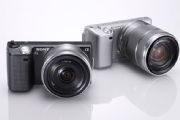 If you can live without an optical viewfinder, these interchangeable-lens cameras offer most of what a DSLR offers in a more-compact body: (SONY NP-BG1 Battery )a large sensor, fast mechanical shutter, swappable lenses, noticeably better image and video quality that your average point-and-shoot, and manual controls.
If you can live without an optical viewfinder, these interchangeable-lens cameras offer most of what a DSLR offers in a more-compact body: (SONY NP-BG1 Battery )a large sensor, fast mechanical shutter, swappable lenses, noticeably better image and video quality that your average point-and-shoot, and manual controls.
The lack of an optical viewfinder is a byproduct of these cameras' smaller size: by eliminating the somewhat large mirror box that lets you frame your shot through the lens, manufacturers were able to make these interchangeable-lens cameras more compact. (SONY NP-FW50 Battery)
One of the main problems is deciding which of the emerging compact interchangeable-lens formats to buy into, because like DSLR lens mounts, they're incompatible with one other: Panasonic and Olympus both use the Micro Four-Thirds System lens mount, but not all Micro Four-Thirds lenses are compatible with both companies' cameras; SONY camera battery Samsung's NX10 uses its own NX lens mount; Sony's NEX series uses the E-Mount system; and other companies are bound to release their own interchangeable-lens compacts.
Because this is a newer type of camera, there aren't as many lens options to choose from, either. Adapters are available that let you use full-size DSLR lenses with these cameras, but they often cost a hundred dollars or more. (OLYMPUS LI-12B battery)
Weaknesses: Bulkier than a point-and-shoot camera; expensive for a fixed-lens camera; not much smaller than an interchangeable-lens camera (NIKON EN-EL14 battery)
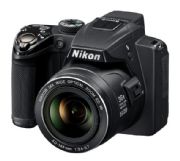 Megazooms don't give you the same lens-swapping versatility of a DSLR or compact interchangeable-lens camera, but they are the most-versatile fixed-lens cameras available. (NIKON EN-EL5 battery)They're called "megazooms" because their lenses serve up a whopping amount of optical zoom (20x to 36x), offering impressive wide-angle coverage and telephoto reach.
Megazooms don't give you the same lens-swapping versatility of a DSLR or compact interchangeable-lens camera, but they are the most-versatile fixed-lens cameras available. (NIKON EN-EL5 battery)They're called "megazooms" because their lenses serve up a whopping amount of optical zoom (20x to 36x), offering impressive wide-angle coverage and telephoto reach.
Most megazooms also offer DSLR-like manual controls for aperture and shutter, as well as excellent image stabilization to help steady full-zoom shots.(NIKON COOLPIX S3 battery) Because of the versatility of their lenses, they're good cameras for landscape photography (they can capture both wide-angle vistas and faraway details), sports photography (you can sit in the crowd and still get tight shots of in-game action), and animal photography (because you really shouldn't get too close to that bear).
Although a megazoom camera (KODAK KLIC-7002 battery) is smaller than a DSLR, it's about the same size as some interchangeable-lens compact cameras, and it won't slip into a pocket or purse. You'll probably need a backpack or camera bag to tote it along with you.
Weaknesses: Some are a bit bulky; more expensive than basic point-and-shoot cameras; some lack manual controls; normally has narrower aperture than an advanced point-and-shoot
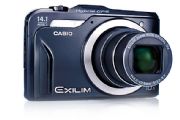 If you're attracted by the versatile fixed lens of a megazoom camera (CANON BP-617 battery) but want something a bit more portable, a pocket megazoom is your best option. These compact cameras offer optical zoom ranges up to about 18x, and although they're definitely more compact than a full-size megazoom or DSLR, some of them aren't quite small enough to slip into a pants pocket. A jacket pocket or purse should be big enough, however. (CANON BP-808 battery)
If you're attracted by the versatile fixed lens of a megazoom camera (CANON BP-617 battery) but want something a bit more portable, a pocket megazoom is your best option. These compact cameras offer optical zoom ranges up to about 18x, and although they're definitely more compact than a full-size megazoom or DSLR, some of them aren't quite small enough to slip into a pants pocket. A jacket pocket or purse should be big enough, however. (CANON BP-808 battery)
These are great cameras for vacationers or for everyday use, due to their versatile combination of zoom range and portability.(CANON NP-E3 battery) They're small enough to bring anywhere, and they offer enough optical zoom to cover anything from wide-angle scenery to faraway shots of sporting events or wildlife.
Although many pocket megazoom cameras have manual controls such as aperture and shutter priority, not all of them do, so be sure to check the specs if you'd like those features. These cameras normally have very good optical image stabilization to bolster their high-zoom lenses. (CANON E-100 battery)
Weaknesses: More expensive than a basic point-and-shoot; can be more complicated to use than a basic point-and-shoot; smaller optical zoom range
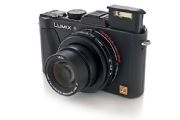 Not all point-and-shoot digital cameras can live up to the scrutiny of a DSLR-toting pro, but an advanced point-and-shoot often gets the nod as a pro shooter's secondary, more-portable camera. (SONY NP-FP70 battery)These cameras have manual controls for setting the aperture, shutter, and ISO, letting you fine-tune your shot more granularly than you can with a basic point-and-shoot.
Not all point-and-shoot digital cameras can live up to the scrutiny of a DSLR-toting pro, but an advanced point-and-shoot often gets the nod as a pro shooter's secondary, more-portable camera. (SONY NP-FP70 battery)These cameras have manual controls for setting the aperture, shutter, and ISO, letting you fine-tune your shot more granularly than you can with a basic point-and-shoot.
Their lenses also tend to have wider maximum apertures than most fixed-lens cameras, meaning that you can shoot at faster shutter speeds, get good shots in low light, and achieve shallow depth-of-field effects to give macro shots and portraits a more artistic look.(SONY CCD-TR413 battery) Although you don't get the zoom range of a pocket megazoom, image quality is often better; you don't end up with the distortion you sometimes see with a high-zoom lens.
Weaknesses: Usually has fewer features than a standard point-and-shoot camera (JVC BN-V114 battery); sometimes has subpar image quality
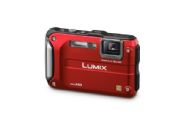 These are the ultimate cameras for extreme-sports enthusiasts, mountaineers, snorkelers, and the just-plain-clumsy. (JVC BN-V712 battery)Quite a few waterproof, freezeproof, drop-proof, and dustproof cameras are available, and they're great for taking underwater shots of fish, lugging to the beach, or taking on a snowboarding trip.
These are the ultimate cameras for extreme-sports enthusiasts, mountaineers, snorkelers, and the just-plain-clumsy. (JVC BN-V712 battery)Quite a few waterproof, freezeproof, drop-proof, and dustproof cameras are available, and they're great for taking underwater shots of fish, lugging to the beach, or taking on a snowboarding trip.
Due to their unique looks and sometimes-barren feature sets, these rugged cameras aren't the first choice for everyday on-the-go use. Image quality can be a mixed bag, as well: they're rugged, but they usually don't have the best optics or biggest sensors. (JVC GR-AX37 battery)But they're durable, and that's sometimes a more important trait to have.
Weaknesses: Usually doesn't have any manual controls; image quality is typically mediocre, especially in low light; inflated megapixel counts
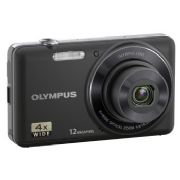 A basic point-and-shoot camera is a no-brainer pick for anyone who just wants an affordable camera to have on hand at all times; most of them even shoot 720p HD video now. In-camera automation is getting better and better, meaning that these cameras (SHARP VL-A10E battery)basically drive themselves; you don't get manual controls that help you fine-tune your photos, but these cameras normally have very good Auto modes and scene selections that choose the appropriate in-camera settings for your shot. (SAMSUNG SB-L110 battery)
A basic point-and-shoot camera is a no-brainer pick for anyone who just wants an affordable camera to have on hand at all times; most of them even shoot 720p HD video now. In-camera automation is getting better and better, meaning that these cameras (SHARP VL-A10E battery)basically drive themselves; you don't get manual controls that help you fine-tune your photos, but these cameras normally have very good Auto modes and scene selections that choose the appropriate in-camera settings for your shot. (SAMSUNG SB-L110 battery)
These cameras usually have small sensors, so don't fall into the trap of buying an inexpensive camera with a very high megapixel count. Packing more megapixels into a small sensor usually leads to image noise, especially when you're shooting at higher ISO settings.
Although they won't offer the same optical zoom reach as a more-expensive camera, a good thing to look for in a basic point-and-shoot camera (SAMSUNG SB-LSM80 battery) is wide-angle coverage (ideally around 28mm on the wide-angle end). That extra wide-angle coverage comes in very handy for group shots, arm's length self portraits, and landscape shots.
more tags about camera charger: Canon BP-511 charger, Canon LC-E5 charger, Canon NB-4L charger, CASIO NP-20 charger, CASIO NP-60 charger, CASIO EX-FS10 charger, FUJIFILM NP-40 charger, FUJIFILM NP-140 charger, JVC BN-V408U charger, JVC BN-V428 charger, KODAK KLIC-7000 charger, KODAK KLiC-7002 charger
Other features are often more important, and they depend on what you'll be using the camera for. For example, a lethargic camera that takes too much time between shots is a lemon for sports or action photographers, and a big, heavy DSLR that takes amazing photos may spend more time on the shelf than in your carry-on bag. A camera (CANON NB-4L battery) with no manual controls may take fabulous shots in bright sunlight, but lousy ones in more challenging situations.
Starting at the top of the photographic food chain, here are the pros and cons of each type of camera.
Digital SLR (DSLR) Camera
Strengths: Superb photos, videos, and low-light shooting; no shutter lag; versatile interchangeable lenses; manual controls for exposure and focus; through-the-lens optical viewfinder (CANON LP-E6 battery)Weaknesses: Expensive; lack of portability; not all DSLRs shoot video; can be complex and intimidating
 If money's no object and performance is your top priority, a digital SLR yields the best photo quality and imaging controls of any type of digital camera (CANON camera battery). The combination of a large sensor, high-quality lenses that you can swap out to achieve a wide range of effects, great high-ISO performance in low light, and lightning-quick shutter response times make it the go-to camera for hobbyists and pro shooters. (CASIO NP-40 battery)A DSLR is also the only type of camera that lets you frame shots using a through-the-lens optical viewfinder, meaning that what you'll see through the eyepiece is a true-to-life representation of your shot.
If money's no object and performance is your top priority, a digital SLR yields the best photo quality and imaging controls of any type of digital camera (CANON camera battery). The combination of a large sensor, high-quality lenses that you can swap out to achieve a wide range of effects, great high-ISO performance in low light, and lightning-quick shutter response times make it the go-to camera for hobbyists and pro shooters. (CASIO NP-40 battery)A DSLR is also the only type of camera that lets you frame shots using a through-the-lens optical viewfinder, meaning that what you'll see through the eyepiece is a true-to-life representation of your shot. Though the prospect of using a DSLR can be intimidating for novice users, most modern models are outfitted with point-and-shoot-like features and LCD-based viewfinders to make the migration easier. (CASIO EXILIM EX-S100 battery)Beyond user-friendly auto-exposure and scene modes, you also get room to grow as a photographer due to a DSLR's full range of manual controls.
The only major drawback to a DSLR is its size, which makes it a tough camera to bring anywhere you go. Price is also a major consideration, even after you spend an initial $700 to several-thousand dollars on the camera body alone. Additional lenses are a must when it comes to unleashing the full power of your DSLR, and they usually cost several hundred dollars a pop (at least). (FUJIFILM NP-95 battery)If you're interested in shooting video, make sure your DSLR supports it; these cameras capture stunning HD video, but only the newest DSLRs are video-capable.
Compact Interchangeable-Lens Camera (Panasonic G-Series, Olympus PEN, Sony NEX, Samsung NX)
Strengths: More-compact than a DSLR; excellent photo and video quality; no shutter lag; versatile interchangeable lenses; manual controls for exposure and focus (FUJIFILM FinePix F470 batteryWeaknesses: No through-the-lens optical viewfinder; can be expensive; fewer lenses available than for DSLRs; still a bit bulky for everyday use
 If you can live without an optical viewfinder, these interchangeable-lens cameras offer most of what a DSLR offers in a more-compact body: (SONY NP-BG1 Battery )a large sensor, fast mechanical shutter, swappable lenses, noticeably better image and video quality that your average point-and-shoot, and manual controls.
If you can live without an optical viewfinder, these interchangeable-lens cameras offer most of what a DSLR offers in a more-compact body: (SONY NP-BG1 Battery )a large sensor, fast mechanical shutter, swappable lenses, noticeably better image and video quality that your average point-and-shoot, and manual controls. The lack of an optical viewfinder is a byproduct of these cameras' smaller size: by eliminating the somewhat large mirror box that lets you frame your shot through the lens, manufacturers were able to make these interchangeable-lens cameras more compact. (SONY NP-FW50 Battery)
One of the main problems is deciding which of the emerging compact interchangeable-lens formats to buy into, because like DSLR lens mounts, they're incompatible with one other: Panasonic and Olympus both use the Micro Four-Thirds System lens mount, but not all Micro Four-Thirds lenses are compatible with both companies' cameras; SONY camera battery Samsung's NX10 uses its own NX lens mount; Sony's NEX series uses the E-Mount system; and other companies are bound to release their own interchangeable-lens compacts.
Because this is a newer type of camera, there aren't as many lens options to choose from, either. Adapters are available that let you use full-size DSLR lenses with these cameras, but they often cost a hundred dollars or more. (OLYMPUS LI-12B battery)
Megazoom (Fixed-Lens High-Zoom) Camera (OLYMPUS LI-10B Battery)
Strengths: Very high optical zoom range; manual controls; normally has excellent image stabilization; better lenses than standard point-and-shoot camerasWeaknesses: Bulkier than a point-and-shoot camera; expensive for a fixed-lens camera; not much smaller than an interchangeable-lens camera (NIKON EN-EL14 battery)
 Megazooms don't give you the same lens-swapping versatility of a DSLR or compact interchangeable-lens camera, but they are the most-versatile fixed-lens cameras available. (NIKON EN-EL5 battery)They're called "megazooms" because their lenses serve up a whopping amount of optical zoom (20x to 36x), offering impressive wide-angle coverage and telephoto reach.
Megazooms don't give you the same lens-swapping versatility of a DSLR or compact interchangeable-lens camera, but they are the most-versatile fixed-lens cameras available. (NIKON EN-EL5 battery)They're called "megazooms" because their lenses serve up a whopping amount of optical zoom (20x to 36x), offering impressive wide-angle coverage and telephoto reach. Most megazooms also offer DSLR-like manual controls for aperture and shutter, as well as excellent image stabilization to help steady full-zoom shots.(NIKON COOLPIX S3 battery) Because of the versatility of their lenses, they're good cameras for landscape photography (they can capture both wide-angle vistas and faraway details), sports photography (you can sit in the crowd and still get tight shots of in-game action), and animal photography (because you really shouldn't get too close to that bear).
Although a megazoom camera (KODAK KLIC-7002 battery) is smaller than a DSLR, it's about the same size as some interchangeable-lens compact cameras, and it won't slip into a pocket or purse. You'll probably need a backpack or camera bag to tote it along with you.
Pocket Megazoom (Compact High-Zoom) Camera
Strengths: Very high optical zoom range for a pocketable camera; portable but versatile; normally has excellent image stabilization; many have manual controls (KODAK Easyshare V1003 battery )Weaknesses: Some are a bit bulky; more expensive than basic point-and-shoot cameras; some lack manual controls; normally has narrower aperture than an advanced point-and-shoot
 If you're attracted by the versatile fixed lens of a megazoom camera (CANON BP-617 battery) but want something a bit more portable, a pocket megazoom is your best option. These compact cameras offer optical zoom ranges up to about 18x, and although they're definitely more compact than a full-size megazoom or DSLR, some of them aren't quite small enough to slip into a pants pocket. A jacket pocket or purse should be big enough, however. (CANON BP-808 battery)
If you're attracted by the versatile fixed lens of a megazoom camera (CANON BP-617 battery) but want something a bit more portable, a pocket megazoom is your best option. These compact cameras offer optical zoom ranges up to about 18x, and although they're definitely more compact than a full-size megazoom or DSLR, some of them aren't quite small enough to slip into a pants pocket. A jacket pocket or purse should be big enough, however. (CANON BP-808 battery)These are great cameras for vacationers or for everyday use, due to their versatile combination of zoom range and portability.(CANON NP-E3 battery) They're small enough to bring anywhere, and they offer enough optical zoom to cover anything from wide-angle scenery to faraway shots of sporting events or wildlife.
Although many pocket megazoom cameras have manual controls such as aperture and shutter priority, not all of them do, so be sure to check the specs if you'd like those features. These cameras normally have very good optical image stabilization to bolster their high-zoom lenses. (CANON E-100 battery)
Advanced Point-and-Shoot (Compact Camera With Manual Controls)
Strengths: Better image quality than most fixed-lens cameras; manual controls over shutter speed and aperture settings;(SONY NP-FA50 battery) usually has a wide aperture at wide-angle end of the zoom; good secondary camera for DSLR owners; good learning tool for novice shootersWeaknesses: More expensive than a basic point-and-shoot; can be more complicated to use than a basic point-and-shoot; smaller optical zoom range
 Not all point-and-shoot digital cameras can live up to the scrutiny of a DSLR-toting pro, but an advanced point-and-shoot often gets the nod as a pro shooter's secondary, more-portable camera. (SONY NP-FP70 battery)These cameras have manual controls for setting the aperture, shutter, and ISO, letting you fine-tune your shot more granularly than you can with a basic point-and-shoot.
Not all point-and-shoot digital cameras can live up to the scrutiny of a DSLR-toting pro, but an advanced point-and-shoot often gets the nod as a pro shooter's secondary, more-portable camera. (SONY NP-FP70 battery)These cameras have manual controls for setting the aperture, shutter, and ISO, letting you fine-tune your shot more granularly than you can with a basic point-and-shoot. Their lenses also tend to have wider maximum apertures than most fixed-lens cameras, meaning that you can shoot at faster shutter speeds, get good shots in low light, and achieve shallow depth-of-field effects to give macro shots and portraits a more artistic look.(SONY CCD-TR413 battery) Although you don't get the zoom range of a pocket megazoom, image quality is often better; you don't end up with the distortion you sometimes see with a high-zoom lens.
Ruggedized Point-and-Shoot Camera
Strengths: Immune to drops, water, freezing, and sandWeaknesses: Usually has fewer features than a standard point-and-shoot camera (JVC BN-V114 battery); sometimes has subpar image quality
 These are the ultimate cameras for extreme-sports enthusiasts, mountaineers, snorkelers, and the just-plain-clumsy. (JVC BN-V712 battery)Quite a few waterproof, freezeproof, drop-proof, and dustproof cameras are available, and they're great for taking underwater shots of fish, lugging to the beach, or taking on a snowboarding trip.
These are the ultimate cameras for extreme-sports enthusiasts, mountaineers, snorkelers, and the just-plain-clumsy. (JVC BN-V712 battery)Quite a few waterproof, freezeproof, drop-proof, and dustproof cameras are available, and they're great for taking underwater shots of fish, lugging to the beach, or taking on a snowboarding trip. Due to their unique looks and sometimes-barren feature sets, these rugged cameras aren't the first choice for everyday on-the-go use. Image quality can be a mixed bag, as well: they're rugged, but they usually don't have the best optics or biggest sensors. (JVC GR-AX37 battery)But they're durable, and that's sometimes a more important trait to have.
Basic Point-and-Shoot Camera
Strengths: Very easy to use; inexpensive; small enough to fit in a pants pocket; usually has a large number of scene modes that select the right in-camera SHARP BT-H21 battery settings for your shotWeaknesses: Usually doesn't have any manual controls; image quality is typically mediocre, especially in low light; inflated megapixel counts
 A basic point-and-shoot camera is a no-brainer pick for anyone who just wants an affordable camera to have on hand at all times; most of them even shoot 720p HD video now. In-camera automation is getting better and better, meaning that these cameras (SHARP VL-A10E battery)basically drive themselves; you don't get manual controls that help you fine-tune your photos, but these cameras normally have very good Auto modes and scene selections that choose the appropriate in-camera settings for your shot. (SAMSUNG SB-L110 battery)
A basic point-and-shoot camera is a no-brainer pick for anyone who just wants an affordable camera to have on hand at all times; most of them even shoot 720p HD video now. In-camera automation is getting better and better, meaning that these cameras (SHARP VL-A10E battery)basically drive themselves; you don't get manual controls that help you fine-tune your photos, but these cameras normally have very good Auto modes and scene selections that choose the appropriate in-camera settings for your shot. (SAMSUNG SB-L110 battery)These cameras usually have small sensors, so don't fall into the trap of buying an inexpensive camera with a very high megapixel count. Packing more megapixels into a small sensor usually leads to image noise, especially when you're shooting at higher ISO settings.
Although they won't offer the same optical zoom reach as a more-expensive camera, a good thing to look for in a basic point-and-shoot camera (SAMSUNG SB-LSM80 battery) is wide-angle coverage (ideally around 28mm on the wide-angle end). That extra wide-angle coverage comes in very handy for group shots, arm's length self portraits, and landscape shots.
more tags about camera charger: Canon BP-511 charger, Canon LC-E5 charger, Canon NB-4L charger, CASIO NP-20 charger, CASIO NP-60 charger, CASIO EX-FS10 charger, FUJIFILM NP-40 charger, FUJIFILM NP-140 charger, JVC BN-V408U charger, JVC BN-V428 charger, KODAK KLIC-7000 charger, KODAK KLiC-7002 charger
No comments:
Post a Comment